Thingiverse

Connect Four - Given up :-) by jth
by Thingiverse
Last crawled date: 3 years ago
When we made our TicTacToeGame in the fablab ( http://hci.rwth-aachen.de/fablab ) of the RWTH-Aachen, we where aware of the limited gameplay. A game, which works a little bit better is known as "Connect Four". Using integrated circuits as multiplexer, it would be possible to light up a bigger matrix than 3 by 3, which makes a four win scenario possible.
Using the standard arduino cube example, you can make a bigger one with a four-gamefields width, heigth and depth with 3 leds in each gamefield for the different players (using the three "cheap" colors red, green and yellow, this makes six player possible with one or two colors and all three colors for active-gamefield). Working with two 4 to 16 multiplexer, you can add some status displays in the bottom, like some kind of highscore and the actual game options (e.g. actual count of player, three or four wins, gravity on or off (if you can place your "stone" everywhere or only on top of other "stones"), if winning combinations disappears and some kind of timeout for the player).
The controller for the player has three buttons for the x-, y-, and z-axis, which are colormapped to improve the mapping for the player. These colors are also lighten as axis in the same color in the gamefield, with the intersection point between the different axis as active gamefield. This can be accepted with a fourth button or moved along the axis with the according buttons.
The different buttons have different series resistor and are connected with a analog input of the arduino for the read-out.
Small Update (after some years :-)
The controller for the player was first reduced to be just a pcb, and later replaced to integrated buttons on the side and top of the "gamefield".
The brain of the game was then replaced by the Big_Mainboard_A, produced with the pcb-mill in the fablab, and later updated to the B-version: The first attempt, where an analogue readout is needed for each button, was way to slow, for the second attempt each button is multiplexed like the leds, which accelerates readout and simplified the logic.
But it with programming and connecting all the lines it becomes clear, that a little more thinking through beforehand would have been better: The multiplexed leds are, of course, just 1/16 as bright as normal, and expanding the I/O outputs of the micro controller with, for example, I2C output expanders to adress each led for themselve would be far better.
The best way would be to use modern intelligent leds, where you just need to connect VCC, GND and two serial ports for each rgb led with the next one.
Can't therefore say it's work in progress anymore, just a (at leat possible to blink) cube which collects dusts on the shelf :-)
Using the standard arduino cube example, you can make a bigger one with a four-gamefields width, heigth and depth with 3 leds in each gamefield for the different players (using the three "cheap" colors red, green and yellow, this makes six player possible with one or two colors and all three colors for active-gamefield). Working with two 4 to 16 multiplexer, you can add some status displays in the bottom, like some kind of highscore and the actual game options (e.g. actual count of player, three or four wins, gravity on or off (if you can place your "stone" everywhere or only on top of other "stones"), if winning combinations disappears and some kind of timeout for the player).
The controller for the player has three buttons for the x-, y-, and z-axis, which are colormapped to improve the mapping for the player. These colors are also lighten as axis in the same color in the gamefield, with the intersection point between the different axis as active gamefield. This can be accepted with a fourth button or moved along the axis with the according buttons.
The different buttons have different series resistor and are connected with a analog input of the arduino for the read-out.
Small Update (after some years :-)
The controller for the player was first reduced to be just a pcb, and later replaced to integrated buttons on the side and top of the "gamefield".
The brain of the game was then replaced by the Big_Mainboard_A, produced with the pcb-mill in the fablab, and later updated to the B-version: The first attempt, where an analogue readout is needed for each button, was way to slow, for the second attempt each button is multiplexed like the leds, which accelerates readout and simplified the logic.
But it with programming and connecting all the lines it becomes clear, that a little more thinking through beforehand would have been better: The multiplexed leds are, of course, just 1/16 as bright as normal, and expanding the I/O outputs of the micro controller with, for example, I2C output expanders to adress each led for themselve would be far better.
The best way would be to use modern intelligent leds, where you just need to connect VCC, GND and two serial ports for each rgb led with the next one.
Can't therefore say it's work in progress anymore, just a (at leat possible to blink) cube which collects dusts on the shelf :-)
Similar models
thingiverse
free
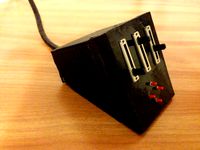
Adjustable RGB LED Color Cube Controller by Dillon1337
...e about it on my blog at:http://tinkeringetc.blogspot.com/2013/07/adjustable-rgb-led-color-cube.html
sketchup file is included.
thingiverse
free

1 Dimensional Connect 4 Game
...get a row of four (or more) of their own color.
here is a video with a good explanation of the game. https://youtu.be/wkqi-kk142q
thingiverse
free

traffic light model (single wall, 5mm LEDs x7 x3) by raigedas
...lls are intended to be glued (or mounted to a floor/ceiling, which is not ready yet).
each color should contain 7pcs of 5mm leds.
grabcad
free

Connect Four (Captain's Mistress)
...ts could be
manufactured of "acrylic glass" in different colors, as shown
in my renderings.
thanks for your attention!
grabcad
free

Bluetooth lightbox 2 in 1 (Sound + lighting effects)
...plication. the lightbox can transmit sound via bluetooth, which makes it possible to connect wired active speakers or headphones.
thingiverse
free

Snap Cubes with Panels
...ors at common edges. this is possible for all 1023 heptacubes, naturally for some heptacubes only less than 30 pieces are needed.
grabcad
free

Four-bar linkage
...llow the bars to rotate about an axis. the links can be of different lengths, and the joints can be configured in different ways.
3dwarehouse
free
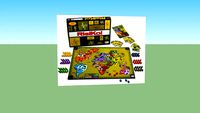
RisiKo games
...t in conquering a certain number of territories, winning two or more continents or annihilating an opposing player. #risiko games
3dwarehouse
free

External Hard Disk case
... each disk. each cooler has a potentiometer to control its speed. green leds are for on status and red leds are for using status.
thingiverse
free

Tetrad board game by arpruss
... putting a two-by-two square of matching pieces.
updates:
dec 28, 2017: made box shorter to save plastic
nov 20, 2017: added box
Jth
thingiverse
free
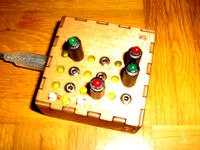
TicTacToe by jth
...he fun of playing a no-win-game is a little bit limited, instead it's like lego: more fun with building than with playing :-)
thingiverse
free

Switchable Outlet Strip by jth
...to distinguish between engraving and cutting lines for the lasercutter...just made as homework for http://hci.rwth-aachen.de/mcp.
thingiverse
free
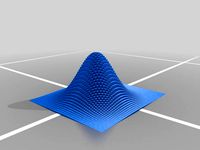
Double Integral Approximation by FormulaJockey
...= (b2-a2)/n. the x and y coordinates of the jth and kth rectangle are thus given by x_j =...
3dwarehouse
free
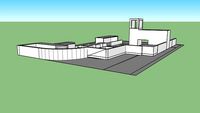
gridlockmap jth
...gridlockmap jth
3dwarehouse
map #gridlock
Given
3d_export
$12

v12 engine assembly
...assembly. all the parts included in the have been given ...
3d_export
$99

porsche 911 gt3 rs 40
...with photorealistic rendering and all types 3d files are given for different use in one...
3d_export
$5

low poly crowd people men woman man women character
...and these models are rigged, a basic rig is given so that you can make these models in any...
3d_export
$5

glass set
...glass set 3dexport model make in blender 2.82.<br>material are given for .blend file<br>other file are without material files but...
3d_ocean
$9
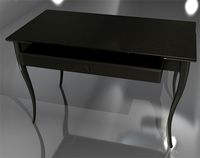
Wooden Desk
...with a droor. rendered with arnold, materials and textures givenset ...
3d_ocean
$6

Coca Cola Can Glass
...can glass 3docean the coca cola can glass, originally given away as part of a mcdonald’s restaurant promotion. this...
3ddd
$1

Carpet UNION, The Rug Company
...white and blue. this hand knotted wool rug is given a vintage finish.http://www.therugcompany.com/uk/union/ 1,511,780...
3d_export
$25

grim reaper death scythe low poly
...and import in any 3dsoftware<br>high resolution texture are also given<br>the model is low poly so you can use it...
3d_export
$5

tea glass
...product is a tea glass. the file types were given ...
3d_export
$5
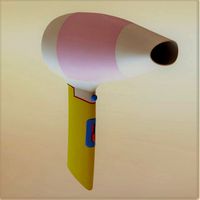
hair dryer
...generate the tooling as well. othe format will be given as you...
Four
design_connected
$7

Four
...four
designconnected
muuto four computer generated 3d model. designed by klenell, matti.
3d_export
$120

Four cylinder
...four cylinder
3dexport
four cylinder render 3d modelling
3d_ocean
$5
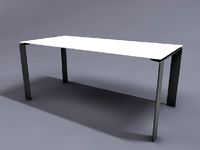
Table Four Kartell
...table four kartell
3docean
cartel cinema4d design four table
3d model of the “four” table created by kartell
turbosquid
$15
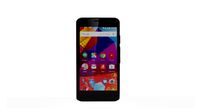
Alba Four
...rbosquid
royalty free 3d model alba four for download as obj on turbosquid: 3d models for games, architecture, videos. (1674466)
turbosquid
$12

four Buddhas
...oyalty free 3d model four buddhas for download as obj and stl on turbosquid: 3d models for games, architecture, videos. (1285096)
turbosquid
$5
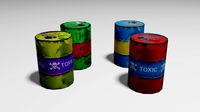
Four Barrels
...lty free 3d model four barrels for download as , obj, and fbx on turbosquid: 3d models for games, architecture, videos. (1707387)
turbosquid
$199

Four Arms
...lty free 3d model four arms for download as obj, c4d, and fbx on turbosquid: 3d models for games, architecture, videos. (1313147)
turbosquid
$100

four interiors
... available on turbo squid, the world's leading provider of digital 3d models for visualization, films, television, and games.
turbosquid
$18

Four Station
... available on turbo squid, the world's leading provider of digital 3d models for visualization, films, television, and games.
turbosquid
$10

Table for four
... available on turbo squid, the world's leading provider of digital 3d models for visualization, films, television, and games.
Connect
turbosquid
$12
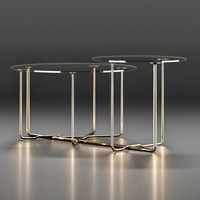
connection
...bosquid
royalty free 3d model connection for download as max on turbosquid: 3d models for games, architecture, videos. (1479836)
3d_export
$5
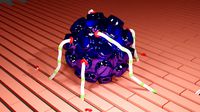
CONNECTED PUMP
...connected pump
3dexport
connected pump<br>.blend
design_connected
$11
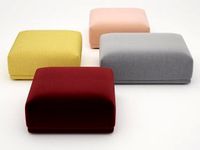
Connect Ottomans
...connect ottomans
designconnected
muuto connect ottomans computer generated 3d model. designed by anderssen & voll.
design_connected
$11

Connection Rectangular
...angular
designconnected
gallotti & radice connection rectangular computer generated 3d model. designed by castagna, massimo.
3d_export
$5

rope connection ring
...rope connection ring
3dexport
rope connection ring
3ddd
free

nurus - connect
... диваны, моделились под проект гостиницы новотель.
более подробная инфа тут:http://www.nurus.com.tr/en/product/connect
turbosquid
$11

pipe connective
... available on turbo squid, the world's leading provider of digital 3d models for visualization, films, television, and games.
turbosquid
$2

Connected Mirror
... available on turbo squid, the world's leading provider of digital 3d models for visualization, films, television, and games.
turbosquid
$2
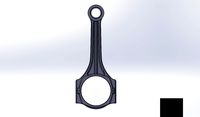
connecting road
... available on turbo squid, the world's leading provider of digital 3d models for visualization, films, television, and games.
turbosquid
$29
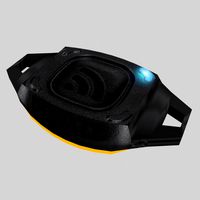
Tool Connect
...ol connect for download as 3ds, max, obj, fbx, blend, and stl on turbosquid: 3d models for games, architecture, videos. (1342648)
